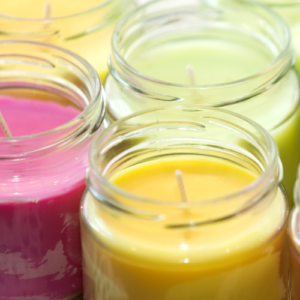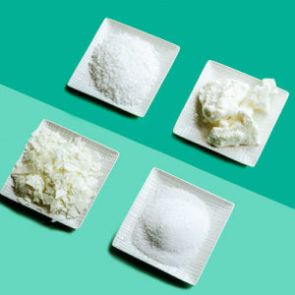What are wet spots and why do they occur?
A wet spot is when the wax in you jar pulls away from the glass in certain areas, giving it a wet appearance. While we call this a “wet spot”, it is not actually wet at all.
The explanation of why it happens is quite simple and comes down to pure science.
When you heat the wax, it becomes a liquid and expands, and as it cools & solidifies it contracts, sometimes pulling away from the glass and creating these “wet spots.”
Temperature variation is the main cause of wet spots in candles. You may have the perfect ambient temperature when making candles but can’t control what happens once the candle leaves your premises. The shipping will create a temperature fluctuation due to the warehouse it goes to for shipping allocation, then the van that it gets transported in as well as where your candle gets delivered to. Hot and cold days will also influence the candle, as well as if the candle has been burnt or not.
So, does this affect the performance of my candle?
No, over all it really doesn’t have an impact on your scent throw, how your candle burns or how your candle performs or the quality of your candle. As candle makers we are our own worst critics and will always notice the smallest things that our clients don’t. It is very normal for any candle of any make to have wet spots. Don’t believe me? Look in the shops next time you are out, this happens with all the candle brands that are available on the shelf.

What can I do to prevent wet spots?
Sadly, you can not completely prevent or get rid of this. Temperature changes happen whether we want them to or not so ultimately in a day, a month, or a year it will happen again.
Here are some things you can try to make it better:
- Preheat your glass wear. The theory behind this is, is that your wax will cool down along with your container there for less shrinkage will occur. However, this is not a guarantee but worth a shot.
- Test with different pouring temperatures. With a lot of waxes this isn’t possible, like paraffin wax because the cooler you pour the more likely the wax is to set in the jug. But with Soy wax you do have a bit more of a play. Start by pour 5 degrees lower than recommended and see if this helps. Remember to take note of what you are doing for future batches in case you find something that works.
- Change the colour of your jar. If you have an opaque jar instead of a transparent jar, you simply won’t see the wet spots and for that reason it won’t bother you.
- The most extreme solution, change your wax. However, by doing this you will need to start your testing all over again and this can be a costly exercise. Also, this does not mean that you won’t have this issue come up again. Temperature will always play a roll.

If your candle is performing to safety standards as well as your own standards, and you are over all happy with the only issue you have is a bit of glass adhesion, we think that’s a perfectly okay problem to have.




